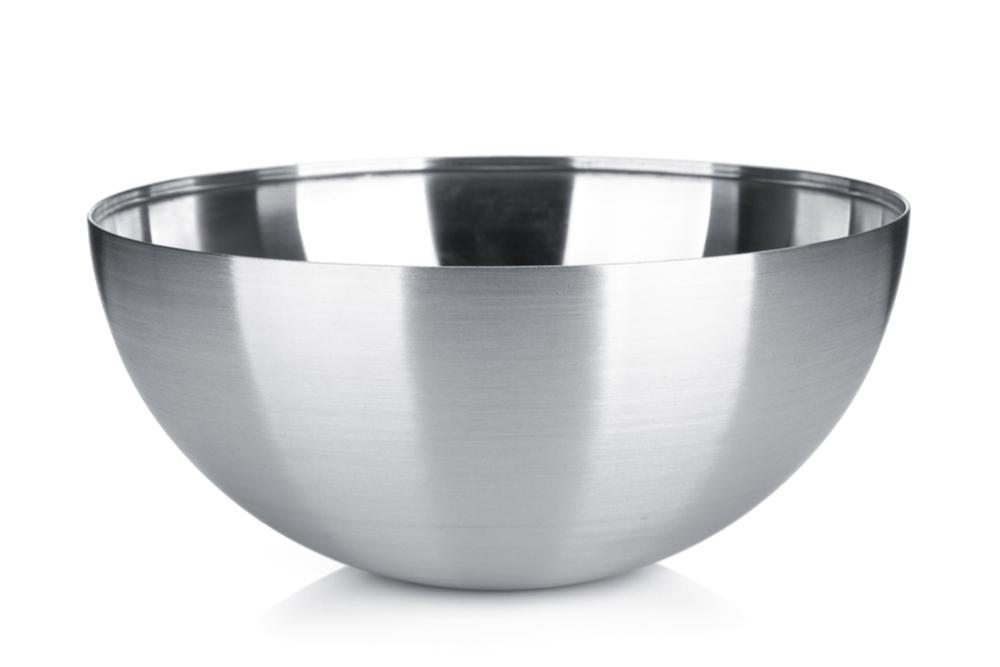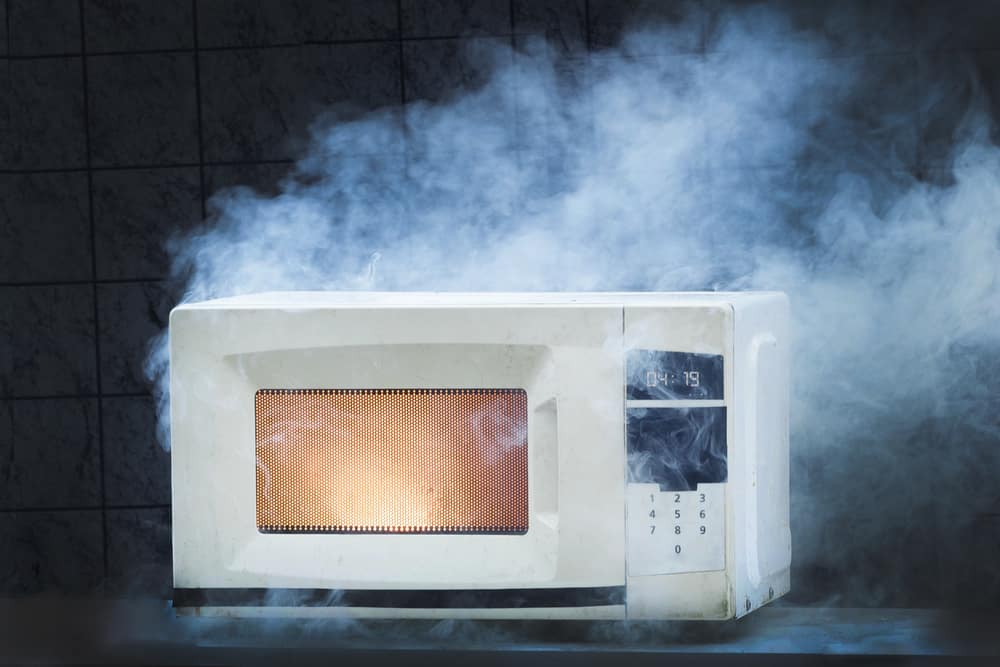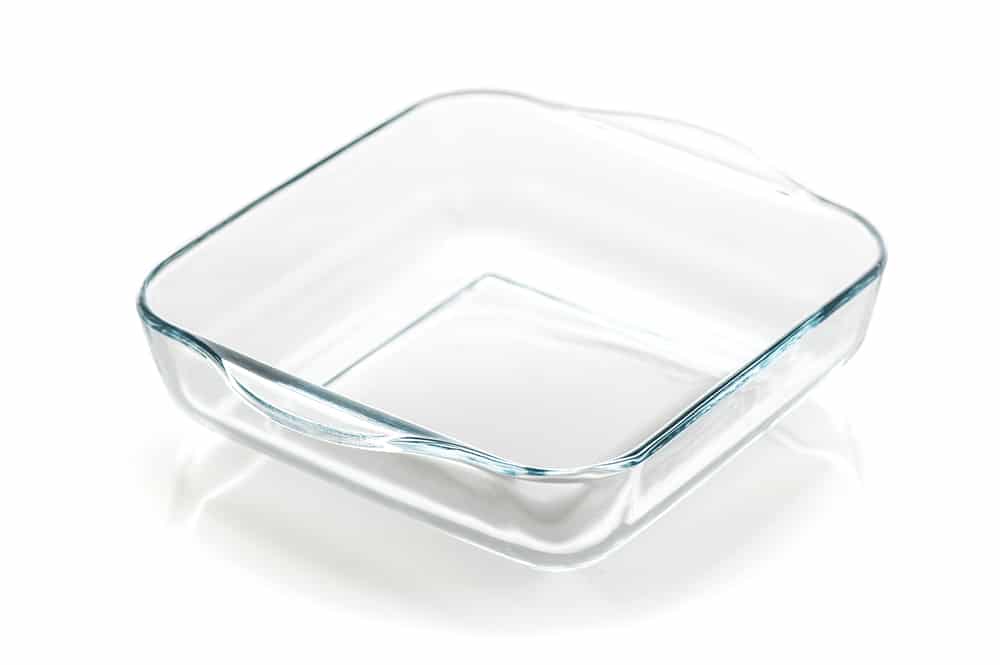Many hazards exist in the typical household kitchen. From razor-sharp knives to scalding stovetops, many typical kitchen appliances and utensils have some element of danger.
A somewhat unlikely source of that danger is the microwave oven.
According to the National Fire Protection Agency, from 2007 to 2011, American fire departments responded to about 7,100 home structure fires each year caused by microwaves.
Some common cookware items can cause serious bodily harm if used in the microwave-metal bowls included.
In this article, learn about:
Before learning what happens to metal in a microwave, it’s important to understand what actually occurs in a microwave. 
A stainless steel bowl should never go in the microwave
To answer the question "can you put a metal bowl in the microwave?" - Any metal bowl - like a stainless steel bowl - should never go in the microwave.
According to the Food and Drug Administration (FDA), microwave radiation vibrates water molecules within the food, cooking it by producing heat.
Many people think that microwaves cook food from the inside out. However, that is not true. Food with many thick layers will be heated from the outer layer in.
There are three characteristics of microwaves that make them great for cooking. First, they pass through many kinds of materials like glass, paper, plastic, and ceramic.
Next, food absorbs microwave radiation. The last characteristic of microwaves is that they are reflected by metal.
The metal interior of a microwave oven is perfectly designed to reflect microwaves onto the food, preventing the radiation from escaping and concentrating it more on the food. However, this is precisely why microwaving metal is so dangerous.
Have you ever accidentally microwaved a metal fork - or any other metal utensil, a small piece of aluminum foil, or even your grandmother’s gold-rimmed teacup? If so, you may have noticed some scary sparks in the microwave.
For the most part, it is not safe to microwave metal, but not all metal is created equally.
Why exactly is metal dangerous in the microwave? According to Wired, at a microscopic level, most metals are made up of a lattice or crystalized atoms with electrons moving freely within.
Microwave energy vibrates these electrons, generating heat inside the metal.
For this reason, thinner metal with sharp edges poses a significantly larger threat than thicker, smooth metal. For example, a large sheet of aluminum foil will heat up very quickly, potentially burning the microwave, sparking, or even causing a fire.
Since metal contains no water, sparks generated from aluminum foil can spread and cause serious harm.

Keep metal out of the microwave to avoid situations like this
The real danger comes from kinks or edges in the metal, which can create concentrated spots of high-energy negative charge. The tines of a fork or kinks in a crumpled ball of aluminum foil will repel other electrons, creating a spark.
This isn’t necessarily dangerous alone, but it can start a fire if you microwave the food with a flammable object, like wax paper or a paper towel.
Hot Pockets and Chef Boyardee microwavable bowls both have metal components, but the type, shape, and amount of metal prevent issues.
No. And no. Microwaving stainless steel products should never occur. Stainless steel is still metal.
While stainless steel bowls tend to be made of thick and smooth meta (no sharp edges) - it is still way too much of a risk. Keep that stainless steel mixing bowl and any stainless steel cookware out of microwave ovens.
Since metal reflects microwaves, the metal bowl will prevent the food from warming up as quickly as it would in a different container. So while many metal bowls are deemed “microwave safe,” it is still in your best interest to avoid metal in the microwave altogether.
The first step to finding the best bowl or container for use in the microwave is to simply look at the label of the bowl to see if you're dealing with a microwave safe container. Often, a bowl will be stamped with a “microwave safe” on the bottom. That gives you an unmistakable green light for use in the microwave!
The best material for the microwave is glass. A glass bowl allows microwaves to enter the food effectively, does not stain, and won’t leach dangerous chemicals into your food. A ceramic dish or bowl is also an excellent option for the same reasons.
Plastic is also effective. However, many plastic containers contain chemicals that can contaminate your food.
In addition, plastic melts at a much lower temperature than glass or ceramic, meaning it can melt on your food. Yuck! If choosing a plastic container, be sure to check that the bowl is deemed microwave safe.

Glass and ceramic containers that are labeled as microwave safe are your best bet for heating things up in the microwave
Paper is also a safe material for use in a microwave oven. Slapping leftover pizza on a paper plate to reheat it is fast and easy, and no dishes need to be done afterward!
However, be extra cautious when microwaving paper with anything metallic, as paper can catch ablaze if the metal sparks.
Use a glass container or a microwave safe ceramic bowl for reheating or cooking food in the microwave.
As mentioned, microwaves work by microwave energy heating up the food that is contained within a food container.
When you run your microwave when it is empty, there are no water molecules (as there are within food) to absorb this microwave radiation.
This results in the microwaves continuing to boucne off the walls of your microwave oven without ever being absorbed. This can potentially damage your microwave oven, including the magnetron. The mangetron produces the microwave raditaion and can overheat and result in an inoperable microwave oven.
Obviously, running your microwave with nothing in it is also a big waste of energy. Running an empty microwave accomplishes nothing, but does use up a lot of energy.
Yes, some commercial microwaves are able to accommodate metal containers or metal utensils - but ONLY when the appliance is in convection mode.
As discussed, microwave ovens typically use magnetic raditation to heat food.
Convection microwaves have an additional heating element and fan that are used when a commercial microwave is in convection mode.
That said, don’t even consider putting metal in any microwave - even a convection microwave - unless you’ve thoroughly read the manufacturer’s product instructions.
The manufacturer should tell you under what circumstances putting metal in the microwave is allowable.
You may have noticed that some microwaves come with metal racks. These racks are specifically designed for microwave use and have rounded corners and extensive use of rubber to reduce the risk of arcing and causing sparks and fires within the microwave.
Metal Racks in Microwaves - How They Work and How They Can Still Result in Sparks if You're Not Careful
You must use these racks according to manufacturer guidelines. Only use racks that were specifically designed for your microwave
Even if your microwave came with a rack, bumping or displacing the rack as mentioned in the video above can result in sparks and a fire risk.
